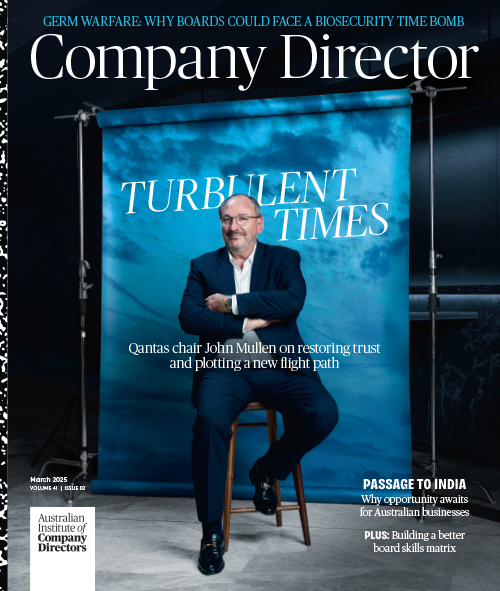The Risk Management Process - A Structured Approach to Identifying, Assessing and Responding to Risks
An organisation faces countless risks spanning strategic, financial, operational, compliance and reputational exposures. Risk management provides a structured process to identify and assess risks in order to implement responses to bring exposures to acceptable levels. Undertaken effectively across the enterprise, the risk management process becomes a competitive advantage enhancing performance and resilience.
What is the Risk Management Context?
Initially the organisational context is established providing the parameters for activities:
Objectives – What are the goals and priorities risk management will enable? These may include strategic objectives, budget commitments or regulatory obligations.
Scope – Which parts of the organisation or value chain will the process address? Will it cover operations, legal entities, suppliers, distribution channels or cyber systems?
Culture – What is the organisation’s risk philosophy and appetite? Is the board open to prudent risk-taking or generally more risk averse?
Resources – What leadership, personnel, infrastructure and systems will support risk management? Is specialised risk management expertise required?
Defining the landscape allows customised processes targeting key risks.
How Does an Organisation Identify Risks?
The heart of the process involves systematically identifying risks that could impact achievement of objectives. Useful risk identification techniques include:
Environmental scanning – Studying internal and external operating context changes highlighting new or amplified risks.
Loss event data analysis – Reviewing historical incidents and losses to identify frequently materialising risks.
Scenario analysis – Envisioning hypothetical “what if” scenarios disrupting operations or plans.
Key risk indicator monitoring – Tracking metrics that may provide early signals of emerging risks.
Surveys and interviews – Asking stakeholders directly about perceived risks.
Risk workshops – Facilitated sessions exploring risks across functions, processes and projects.
Continuous identification uncovers threats before they become issues..
Analysing and Evaluating Risks
Once identified, risks are analysed by assessing:
- Likelihood – How probable or frequent is occurrence based on past experience?
- Impact – What is the expected severity of consequences if the risk eventuates?
Likelihood and impact are quantified using scales aligned to organisational contexts and objectives. The two factors are combined to determine an overall risk rating reflecting inherent risk severity.
Detailed risk evaluation provides inputs for proportionate responses by revealing root causes, controls and interconnections. Useful analysis techniques include process mapping, statistical analysis, scenario modeling and SWOT analysis.
How Does an Organisation Treat Identified Risks?
With risks analysed, management selects responses to align exposures to desired levels:
- Accept – No further action if residual risk is already aligned to appetite.
- Reject – Cease the activity presenting excessive risk.
- Reduce – Implement controls or process changes to lower probability or impact.
- Transfer – Outsource activities or purchase insurance to share exposures.
- Exploit – Reconfigure operations to capture strategic upside opportunities associated with a risk.
Responses align anticipated residual risk with risk appetite and tolerances set by the board.
Monitoring and Reporting Risks
The final element involves continuously monitoring risks and response effectiveness:
Key risk indicators - Track metrics providing dynamic risk exposure visibility.
Issue and incident reporting – Alert changes in real-time risk status.
Audits and reviews – Independently verify risk and control effectiveness.
Dashboards – Display risk summary information such as maturity indicators.
Risk reporting – Update changes to exposures, responses and early warnings.
Continuous monitoring sustains visibility enabling timely responses keeping pace with a dynamic environment.
Instilling Risk Management Culture
Beyond process, successful risk management relies on culture and conduct prioritising openness, accountability and learning:
Tone at the top – Executive leadership commitment shows through modeling behaviors.
Psychological safety – An environment where people feel comfortable constructively discussing risks without blame.
Informed risk-taking – Acceptance that uncertainty requires prudent risk-taking to innovate and achieve outcomes.
Universal adoption – Avoiding risk management as a specialist function by integrating practices into all activities.
Celebrating behaviors – Positive reinforcement when individuals demonstrate desired risk-aware actions.
Embedded risk-smart behaviors sustain risk management disciplines beyond policies.
Conclusion
The risk management process provides a structured approach to identifying, analysing and responding to uncertainty. Maintained diligently across the organisation, the process builds resilience and enables confident pursuit of objectives. But meaningful results rely on instilling risk-aware cultural values and conduct that activate rote procedures into strategic governance advantage.
Already a member?
Login to view this content



